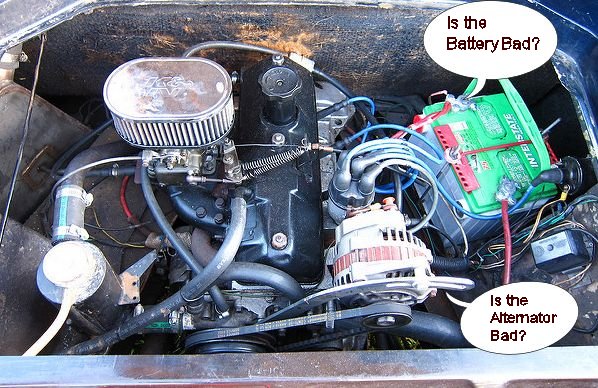
Battery versus Alternator: Which One is Bad?
Battery versus Alternator: Which One is Bad?
Batteries and alternators go together like peanut butter and jelly, with the battery starting the vehicle and the alternator charging the battery. But if the vehicle suddenly won’t start, how can you tell which one has gone bad? The Motor Bookstore looks at how to test your battery and alternator so you’ll know which needs to be replaced.

The battery
You should always start by checking the battery, because this is easier both to check and replace. An early sign your battery is going dead is if you hear a low whining sound when you start the vehicle. If it’s gotten to the point where it won’t start, there are a few diagnostic options. After jump-starting the vehicle, let it run for 20-30 minutes; if the vehicle won’t start again after turning it off, the battery is no longer holding a charge.
Some vehicles have a gauge that shows if the battery is working even when the vehicle is off. A dim, flickering light means something is using battery power. If this happens, turn off all accessories, clean any corrosion off the terminals, and try to charge the battery again. You can also use a voltmeter to check the battery voltage. This should be around 12.6 volts when the vehicle is off, and 14-15 volts when the vehicle is running.
The alternator
There are multiple signs your alternator could be failing. If your interior lights fade as the car runs, it’s a sign the alternator isn’t charging the battery. Another sign is that the lights shine brightly when you speed up, but fade when you slow back down. You can sometimes hear a growling sound right before the alternator goes out, and the smell of burning rubber or hot wires from the engine might be the alternator overheating.
Two fairly reliable alternator tests can be done at home. If the battery is adequately charged, start your car, then disconnect the positive terminal on the battery. The car shutting off likely means an alternator problem. If the car won’t start, jump-start it, then disconnect the jumper cables. As with the first test, the car dying immediately is a good indicator the alternator is at fault.
Hopefully, the suggestions above will provide you with the strategies and techniques to determine if your battery versus alternator is bad. If not, you might consider one of our DIY car electrical manuals for additional expert advice.

 Shop Store
Shop Store











